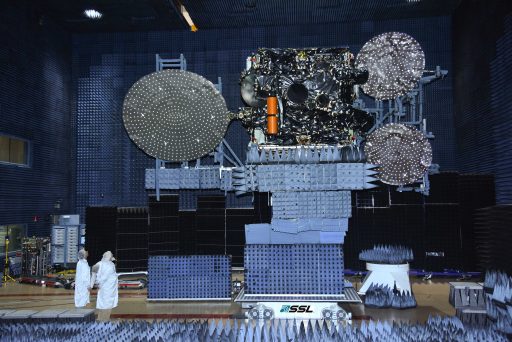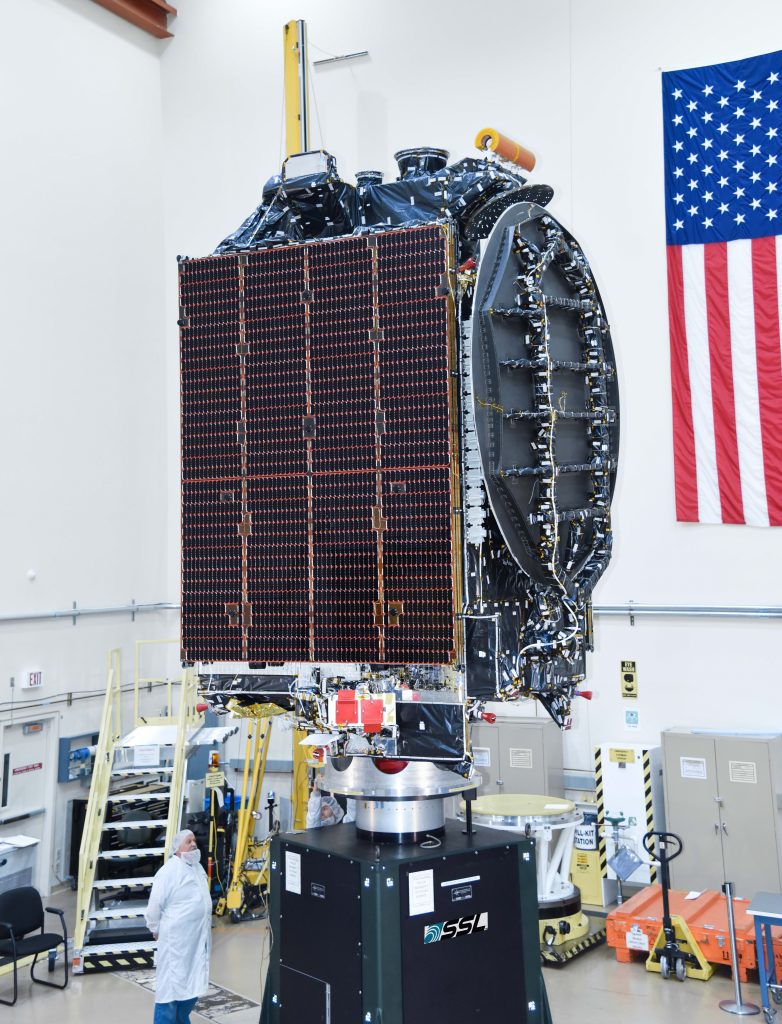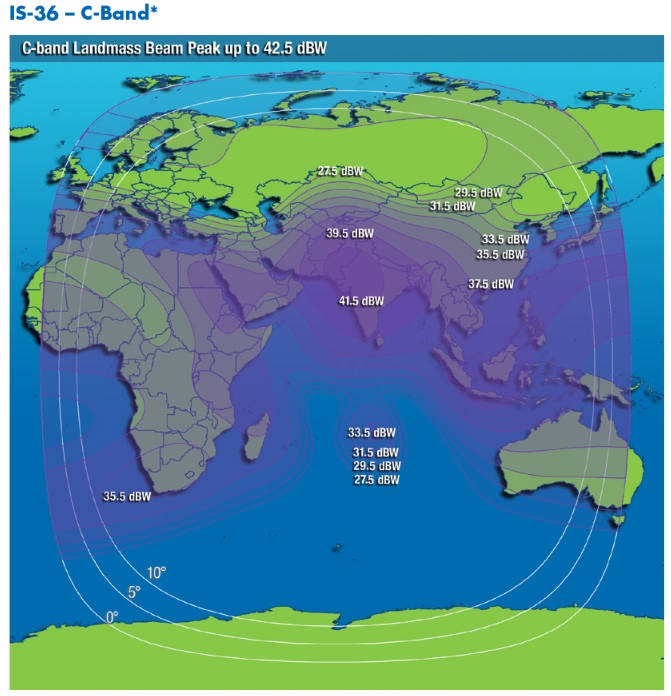Intelsat 36

Intelsat 36 is the smaller of two Intelsat communications satellites launching in August 2016 on an Ariane 5 rocket in a rare dual-payload launch where both satellites are operated by the same company.
Intelsat ordered the IS-36 satellite from Space Systems/Loral in August 2014 based on the well-proven SSL-1300 satellite platform, to be outfitted with a hybrid C/Ku-Band payload to reinforce Intelsat’s media and content distribution capacity.
Operating from 68.5° East in a position over the Indian Ocean, Intelsat 36 will be co-located with the Intelsat 20 satellite to provide additional coverage from Intelsat’s premier Direct-To-Home (DTH) neighborhood in Africa.
The Ku-Band payload, comprised of 30 transponders, is utilized by MultiChoice – a leading pay TV provider in Africa – to deliver TV services to Sub-Saharan Africa. Ten C-Band transponders are available for customers using this video neighborhood from where coverage to African and South Asian cable communities is possible. The C-Band transponders operate at a downlink frequency band of 3700 to 3900 MHz while uplink is accomplished at 5925 – 6215 MHz.

The 3,253-Kilogram Intelsat 36 satellite is based on the LS-1300 satellite bus. LS-1300 is a flexible satellite platform that can be flown in different configurations to accommodate different communication payloads with a total power of 5 to 20kW. Using different configurations, LS-1300 satellites can weigh from 2,200 up to 6,700 Kilograms featuring payloads of 12 to 150 transponders. LS-1300 was introduced in the late 1980s, but undergoes constant modifications going through a number of revisions over the years.
Intelsat 36 is 5.2 by 3.1 by 3.4 meters in size.
As a low-power configuration of LS-1300, Intelsat 36 uses two solar arrays, each with three panels that deliver power to a dedicated system that conditions the satellite’s power bus and controls the state of charge of the vehicle’s batteries. Three-axis stabilization and navigation is accomplished by state of the art navigation sensors and reaction wheels.
The satellite is equipped with a chemical propulsion system for orbit-raising and stationkeeping using an R-4D main engine and a series of attitude control thrusters. LS-1300 also provides the option of an additional electric propulsion system, whether this option is exercised for Intelsat 36 is not known.
The satellite features an onboard propulsion system centered around an R-4D-11 engine. The R-4D engine is a Monomethylhydrazine/Nitrogen Tetroxide Engine that provides 490 Newtons of thrust. The engine is 0.55 meters long and 0.28 meters in diameter with an unfueled mass of 3.63 kilograms. The engine provides a specific impulse of 312s, has a thrust to weight ratio of 13.7 and operates at a chamber pressure of 6.9 bar. The original RD-4 was developed as an attitude control thruster for the Apollo Service and Lunar Lander modules.

